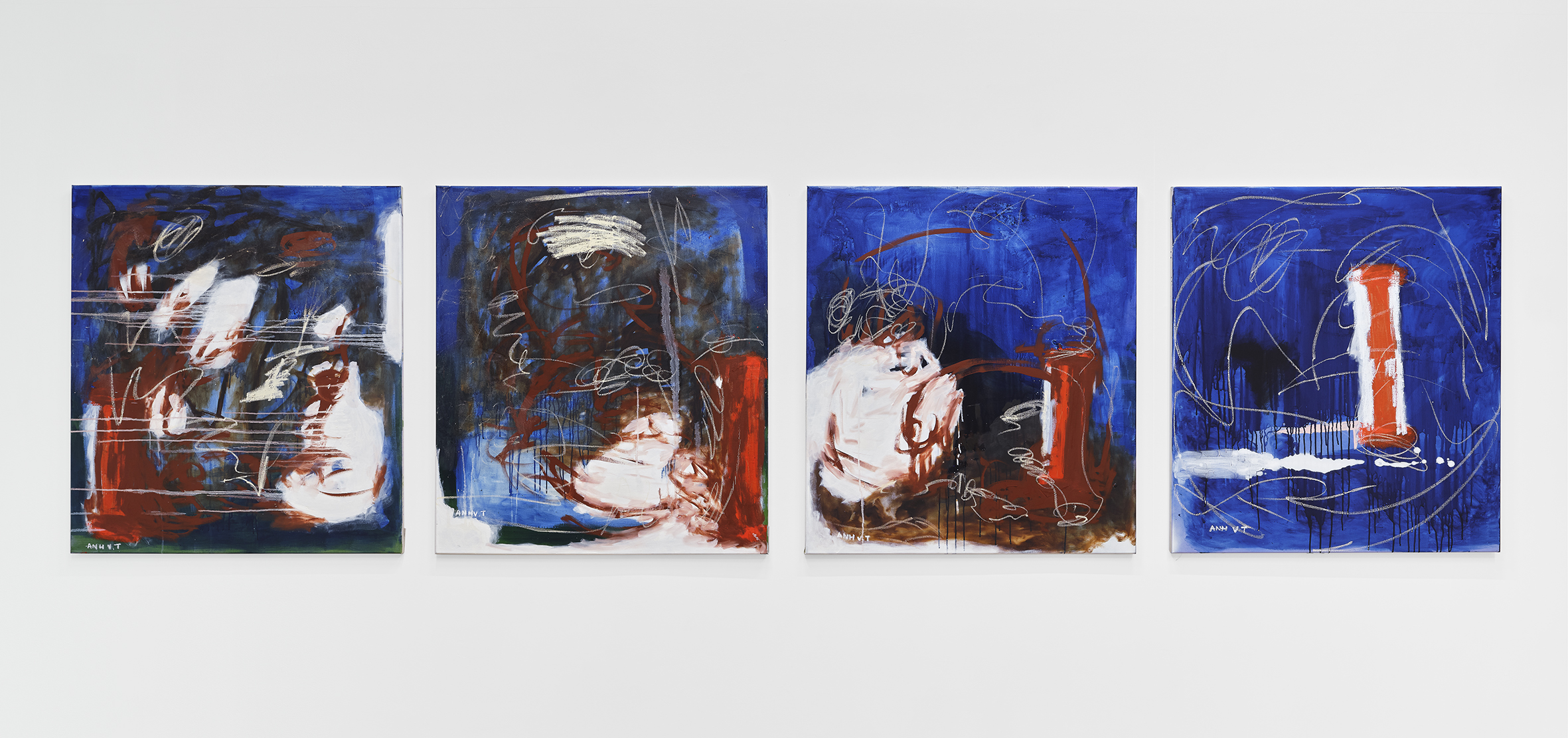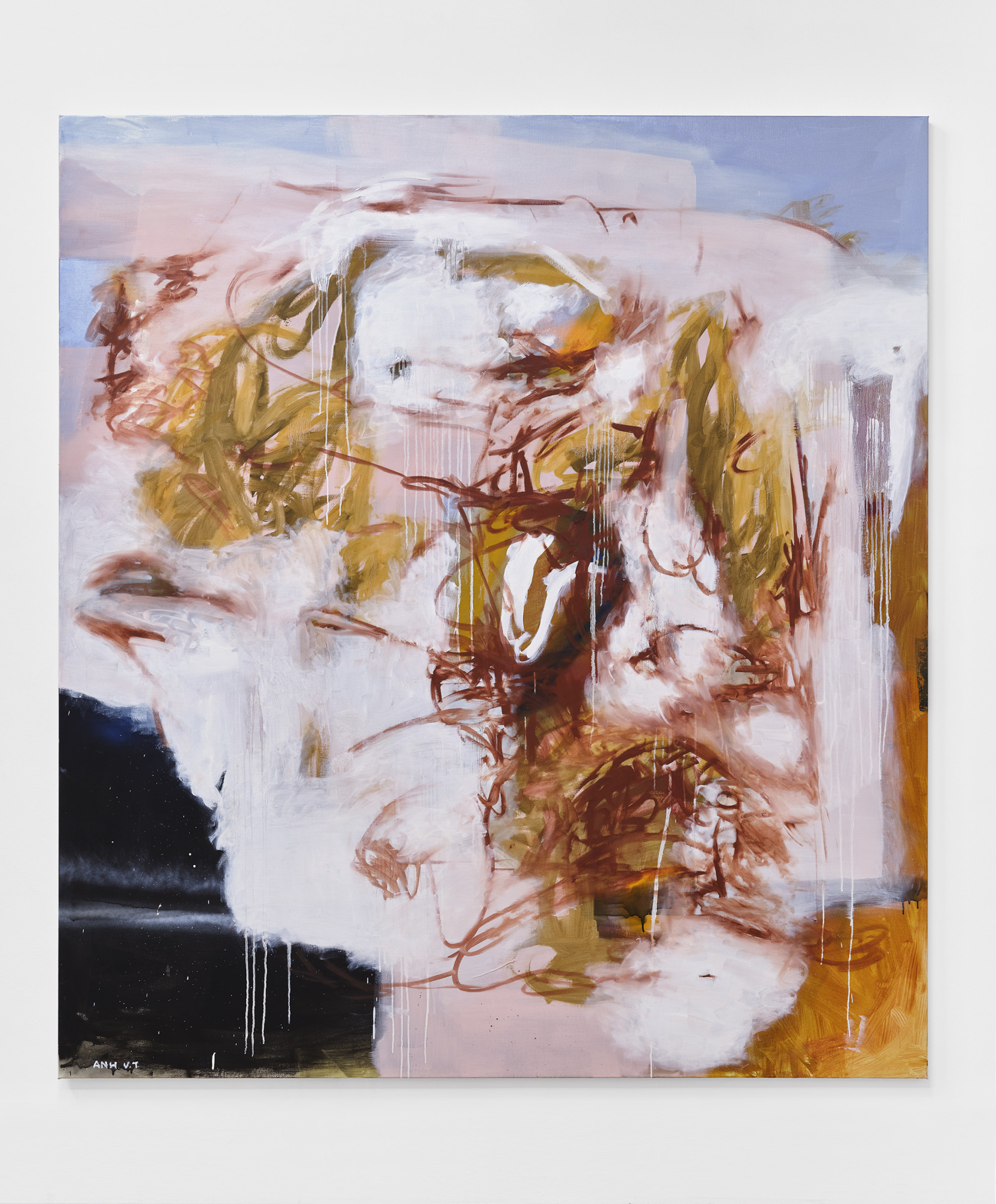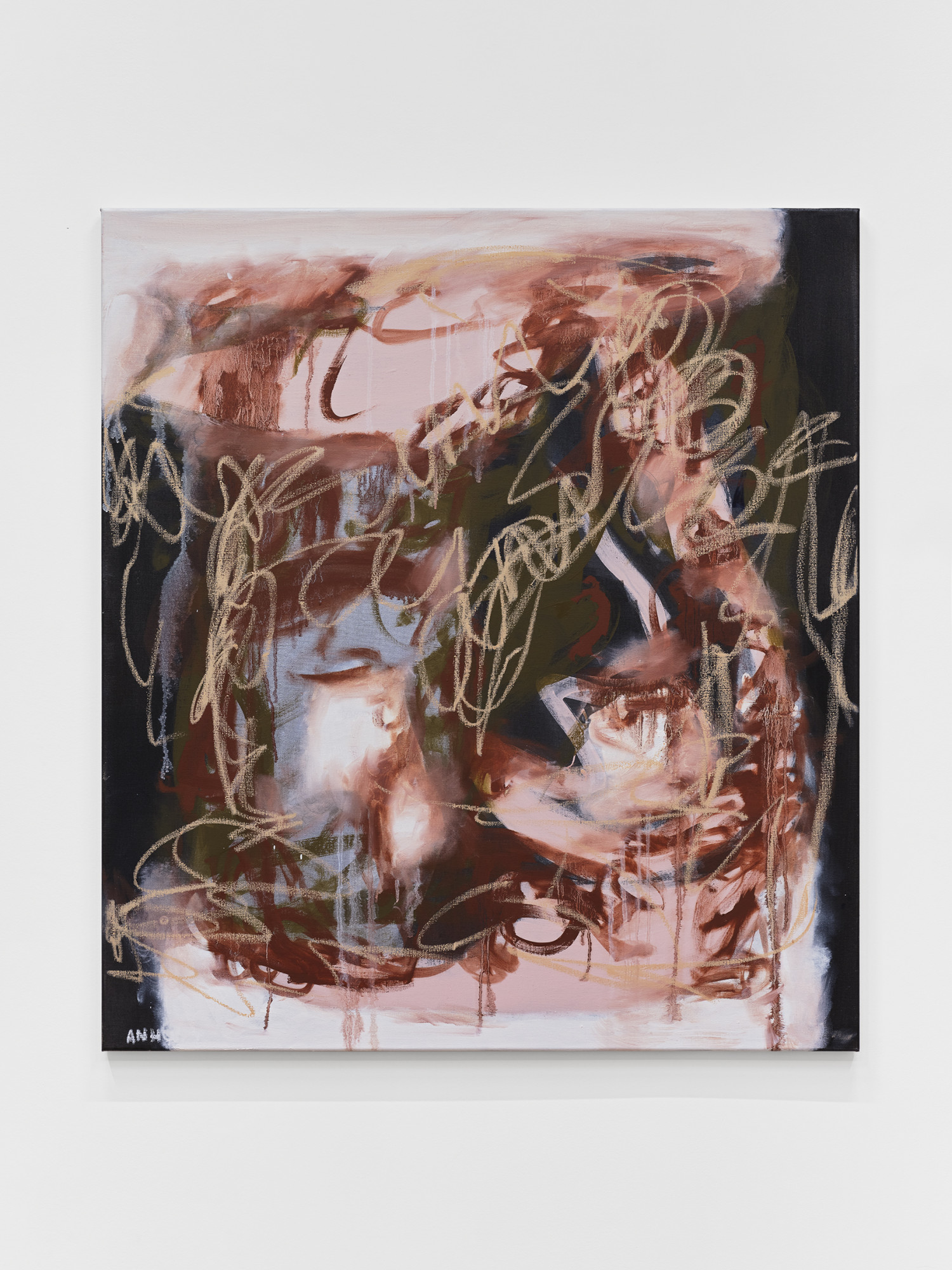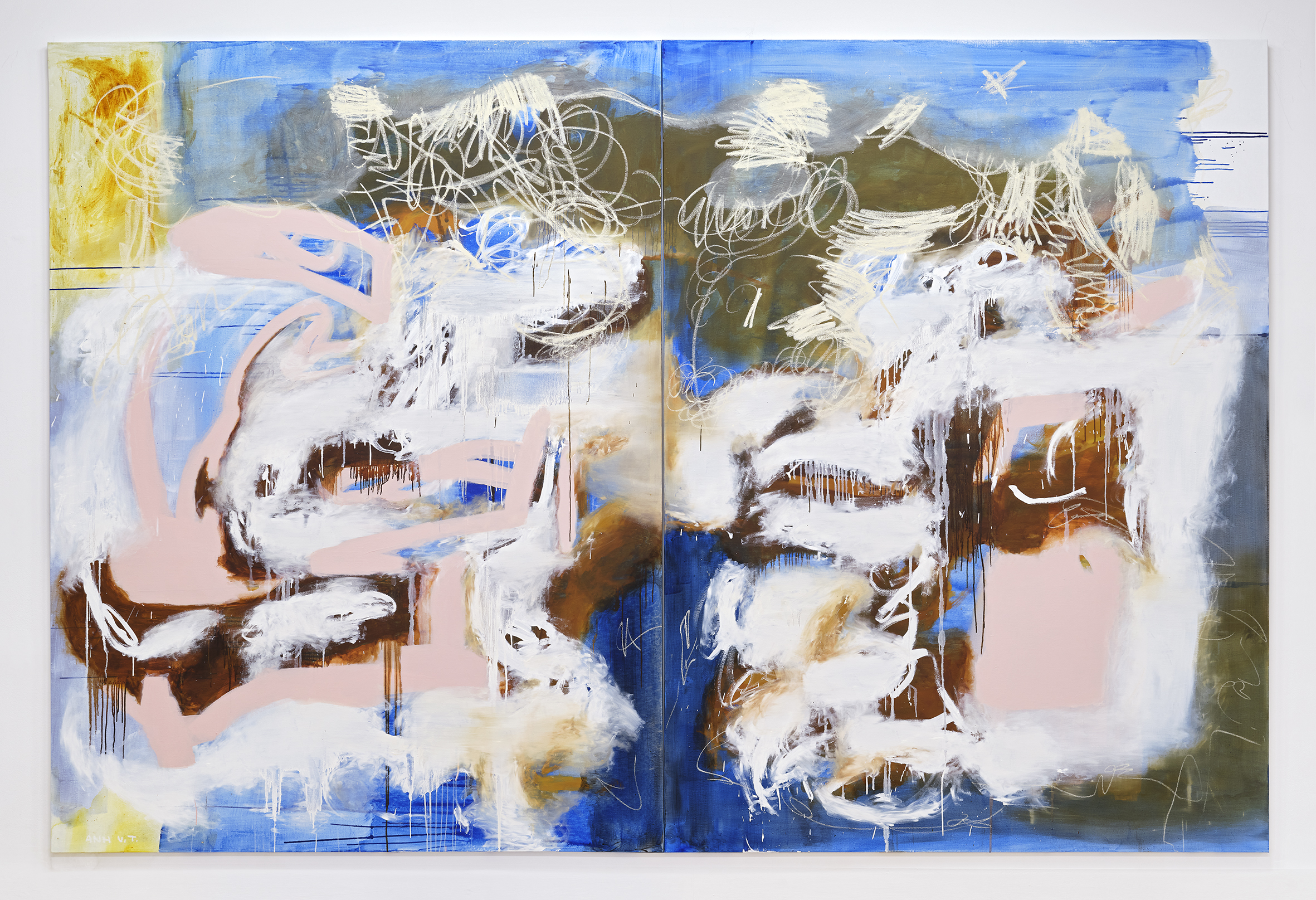Fitzpatrick Gallery
Paris
Anh Trần
Et puis, un jour, mon amour, tu sors de l’éternité
Sep 02, 2023
Sep 30, 2023

For her exhibition at Fitzpatrick Gallery, Anh Trần has reprised one of her favorite touchstone’s, Hiroshima Mon Amour, the 1959 film written by Marguerite Duras and directed by Alain Resnais. This film touches on questions of romance, poetry, and the political ramifications of the interaction of east and west, all of which animate Trần’s work and personal life. This is encapsulated in the famous line from the film that the painter has appropriated as the title of her exhibition: «Et puis, un jour, mon amour, tu sors de l’éternité” [“and then, one day, my love, you will come out from eternity”].
In the paintings on view, dark grounds of blue, navy, and black are densely layered with atmospheric puffs of cloud-like bursts of pink, white, red, green, which are accentuated as well as obscured by swirling off-white, yellow, red, and brown marks made with an oil stick. Looping gestures like Trần’s, often have, a poetic, writerly quality, without saying anything specific, which is how Roland Barthes speaks of the role of the grapheme in Cy Twombly’s work. The grapheme, which also appears in Trần’s paintings, is allusive to site of writing and thus of culture. Such gestures are perfectly aligned with Trần’s peripatetic condition as a global citizen constantly moving between spaces and languages: from Vietnam to Aotearoa, New Zealand to Amsterdam to Berlin, and back again.
Trần is a painter in spite of the environment around her. Living in Europe has meant a retreat from the painting discourses that permeated her education in Aotearoa, New Zealand. But this only further reinforced her conviction in the medium—or perhaps better put, the performance—of painting. While residing in Amsterdam as a fellow at the Rijksakademie, Trần looked mostly at video art and read postcolonial theory. Even if this did not bleed directly into the paintings in any clearly discernible way, it led her to question the notion of a painting as an autonomous object, in particular through the means of its production.
Trần approaches the act of painting as a performative one. To perform painting is to allow into the canvas the vagaries of individual subjectivity and, along with them, the background of the artist that makes the work: their gender, race, class, sexuality, geographic origins, education, etc. Permitted to operate via the means of the painting’s production, these conditions contextualize the painting, rather than overdetermine it as a site of any specific or singular discourse. The resulting work records, and thus is embedded with, the vicissitudes of its maker and the act of being made, rather than seeks to explicate them.
Much has been remarked on the relationship between Trần’s work and the legacy of Abstract Expressionism. Her dialogue with this legacy is nuanced. Commentators often miss the chain of reception of American Abstract Expressionism, preferring to amalgamate all gestural abstraction to this tradition, which only serves to reinforce its ideological hegemony in the face of the diversity of ways in which this paradigm has been unpacked and reconfigured in different times and places. Indeed, Trần works more out of the legacy of those artists who have responded to canonical masters like Pollock and de Kooning. This makes sense given the context of Abstract Expressionism as having been used, in some cases, as a cipher for American cultural imperialism, and thus impossible for a Vietnamese person, whose country was subject for decades to much more blatant forms of Western imperialism, to approach uncritically. For example we can see elements of the color blocking and mark making of second generation Abstract Expressionist painters like Joan Mitchell and Sam Francis in her work, as well those of the 1980s Neogeo artists, like Jonathan Lasker and Gunther Forg, who were already dealing with the sense that the Abstract Expressionist mode had become stylized and exhausted.
We can also look to those artists who took up what the critic Harold Rosenberg dubbed “action painting” in an expanded field of production and reception. For example, the French painter Georges Mathieu, who spectacularized the autographic mark, staging elaborate painting performances and, perhaps even more so, the Gutai artists of Japan, who demythologized process by making visible via ritualized actions the means by which the painting was produced. What Mathieu and the Gutai artists share in common with Trần is a treatment of the work as a document or result of the performative act, which is held as equally important as the finished canvas.
While utilizing the performative act, Trần makes it private, removed from the prying eyes of the public, or even a photographer. She largely avoids the spectacularizing impulse of our time to make all artistic acts public, while preserving the intuitive, gestural time based action as essential to the final painting. We can see this when we gaze upon one of Trần’s paintings, which unfold for us in a hectic, speedy, intense way, not unlike their act of making. We follow along in the acts of layering, addition, subtraction etc., caught up in the frenzy traced by Trần’s brush, even if we are not privy to it.
— Alex Bacon
Artforum: Must See
Contemporary Art Daily
Contemporary Art Library



